Differential Bi-Level Microstrip Directional Coupler with Equalized Coupling Coefficients for Directivity Improvement
Abstract
:1. Introduction
2. Analysis and Design
- From the numerical analysis the 4 × 4 per-unit-length inductive and capacitive matrices of a coupled-line system have been found.
- The 4 × 4 matrices have been reduced to 2 × 2 matrices of the equivalent two conductor coupled-line section with the formulas derived in [11].
3. Conclusions
Author Contributions
Funding
Conflicts of Interest
References
- Ng, H.J.; Jahn, M.; Feger, R.; Wagner, C.A. Stelzer: An efficient SiGe double-balanced mixer with a differential rat-race coupler. In Proceedings of the European Microwave Conference, Nurnberg, Germany, 6–10 October 2013. [Google Scholar]
- Shi, Q.; Vaesen, K.; Parvais, B.; Mangraviti, G.; Wambacq, P. A 54–69.3 GHz dual-band VCO with differential hybrid coupler for quadrature generation. In Proceedings of the IEEE Asian Solid-State Circuits Conference (A-SSCC), Singapore, 11–13 November 2013. [Google Scholar]
- Shi, J.; Qiang, J.; Xu, K.; Wang, Z.B.; Lin, L.; Chen, J.X.; Liu, W. A balanced filtering branch-line coupler. IEEE Microw. Wirel. Compon. Lett. 2016, 26, 119–121. [Google Scholar] [CrossRef]
- Shi, J.; Qiang, J.; Cao, Q. Single-layer balanced branch-line coupler. In Proceedings of the IEEE 5th Asia Pacific Conference on Antennas and Propagation APCAP, Kaohsiung, Taiwan, 26–29 July 2016. [Google Scholar]
- Duan, X.; Feng, W.; Zhao, Y.; Che, W.; Gomez-Garcia, R. Single-band balanced coupler with wideband common-mode suppression. In Proceedings of the International Conference on Microwave and Millimeter Wave Technology (ICMMT), Chengdu, China, 7–11 May 2018. [Google Scholar]
- Chang, C.C.; Pang, Y.H. Dual-band balanced-to-balanced rat-race coupler with bandpass response. In Proceedings of the IEEE Asia Pacific Microwave Conference (APMC), Kuala Lumpur, Malaysia, 13–16 November 2017. [Google Scholar]
- Wang, Y.; Ma, K.; Mou, S. A transformer-based 3-dB differential coupler. IEEE Trans. Microw. Theory Tech. 2018, 65, 2151–2159. [Google Scholar] [CrossRef]
- Shi, J.; Qiang, J.; Xu, K.; Qin, W.; Zhou, L.; Cao, Q. A differential branch-line coupler. In Proceedings of the IEEE 4th Asia-Pacific Conference on Antennas and Propagation (APCAP), Kuta, Indonesia, 30 June–3 July 2015. [Google Scholar]
- Vioneau, F.; Martineau, B.; Sie, M.; Ghiotto, A.; Kerherve, E. A differential vertical hybrid coupler and low capacitance RF pads form millimeter-wave applications in 28 nm CMOS FDSOI. In Proceedings of the IEEE 18th Topical Meeting on Silicon Monolithic Integrated Circuits in RF Systems (SiRF), Anaheim, CA, USA, 14–17 January 2018; pp. 57–59. [Google Scholar]
- Hamed, K.W.; Freundorfer, A.P.; Antar, Y.M.M. A new broadband monolithic passive differential coupler for K/ka-band applications. IEEE Trans. Microw. Theory Tech. 2006, 54, 2527–2533. [Google Scholar] [CrossRef]
- Janisz, K.; Piekarz, I.; Staszek, K.; Wincza, K.; Gruszczynski, S. Differentially fed directional couplers with coupled-conductors of unequal widths. IEEE Microw. Wirel. Comp. Lett. 2018, 28, 759–761. [Google Scholar] [CrossRef]
- Piekarz, I.; Sorocki, J.; Wincza, K.; Gruszczynski, S.; Papapolymerou, J. High-performance differentially fed coupled-line directional couplers realized in inhomogeneous medium. IET Microw. Antennas Propag. 2019, 13, 2005–2012. [Google Scholar] [CrossRef]
- Smolarz, R.; Wincza, K.; Gruszczynski, S. Modal phase velocity compensation in multilayer differentially-fed directional couplers. Microw. Opt. Technol. Lett. 2020. [Google Scholar] [CrossRef]
- Djordjevic, A.R.; Bazdar, M.B.; Sarkar, T.K.; Harrington, R.F. Matrix Parameters for Multiconductor Transmission Lines, Software and User’s Manual; Artech House: Norwood, MA, USA, 1989. [Google Scholar]
- Sachse, K. The scattering parameters and directional coupler analysis of characteristically terminated asymmetric coupled transmission lines in an inhomogeneous medium. IEEE Trans. Microw. Theory Tech. 1990, 38, 417–425. [Google Scholar] [CrossRef]
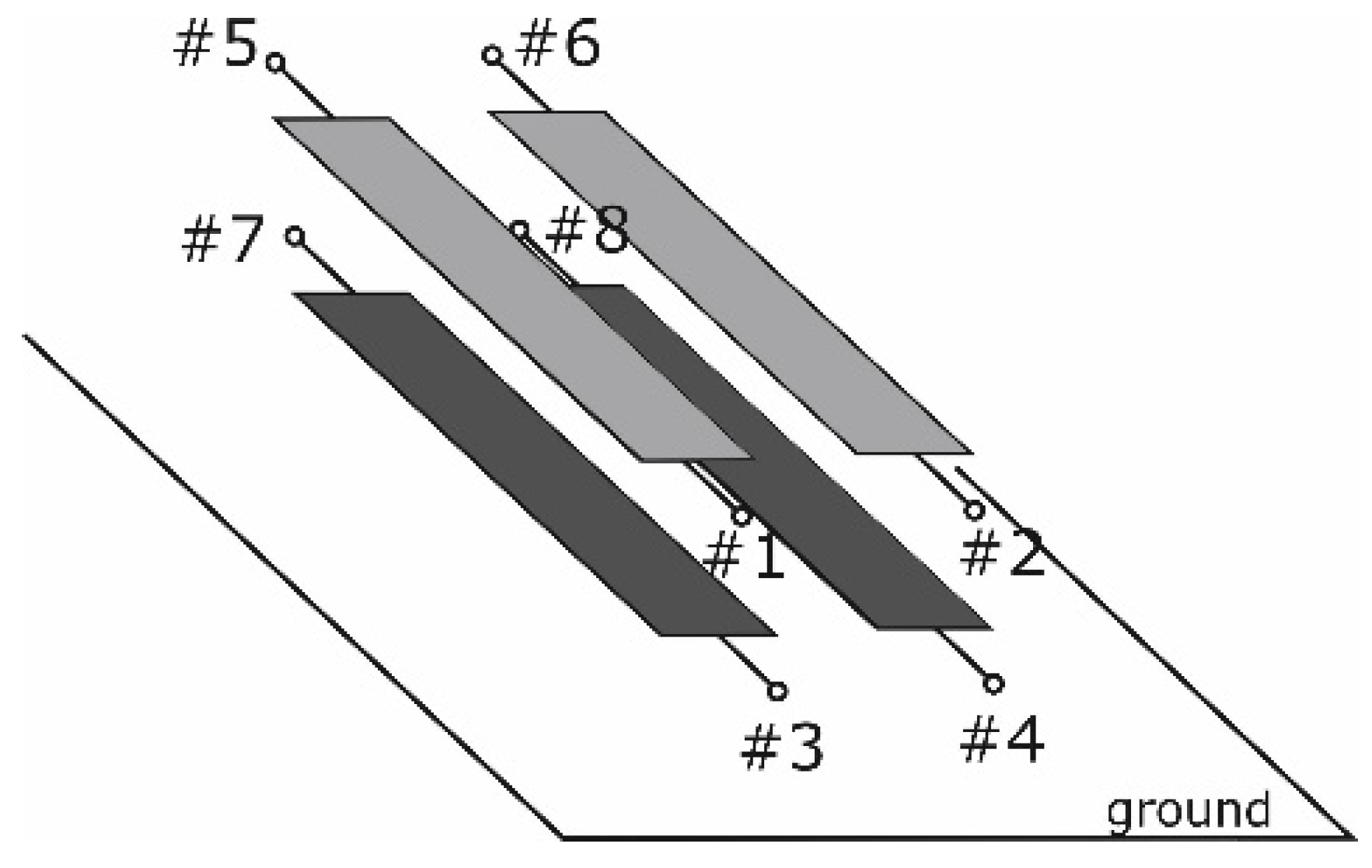
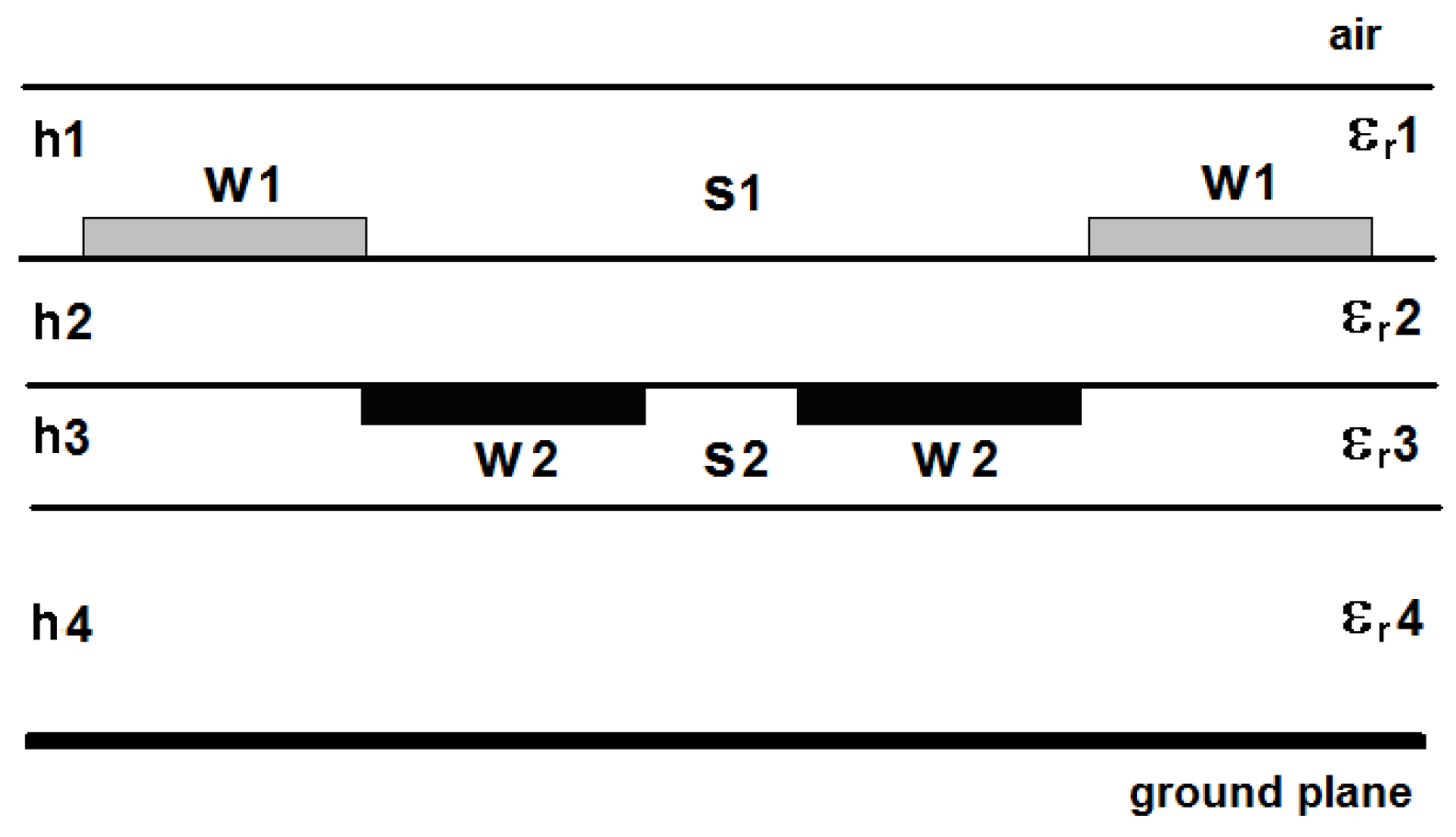

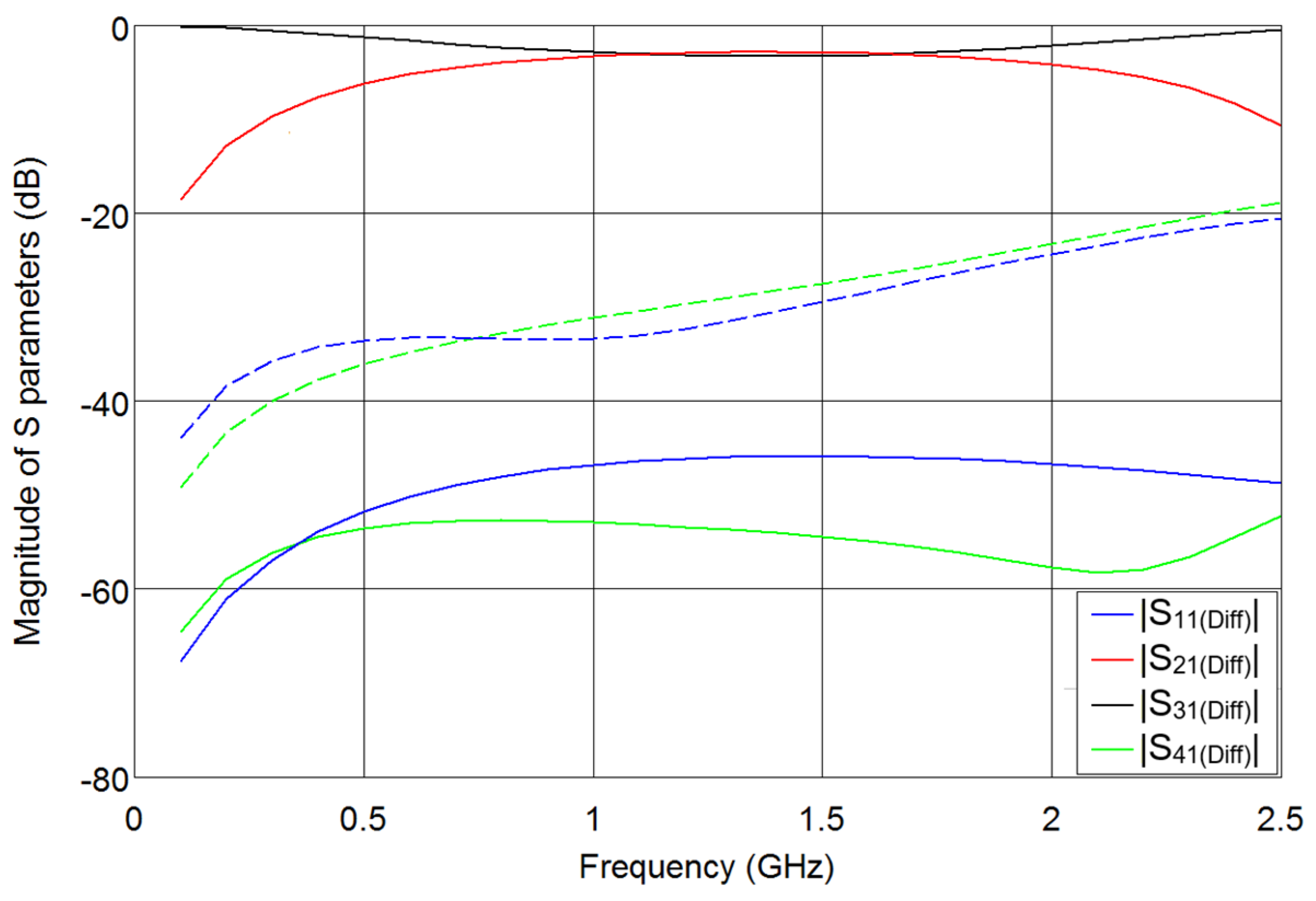
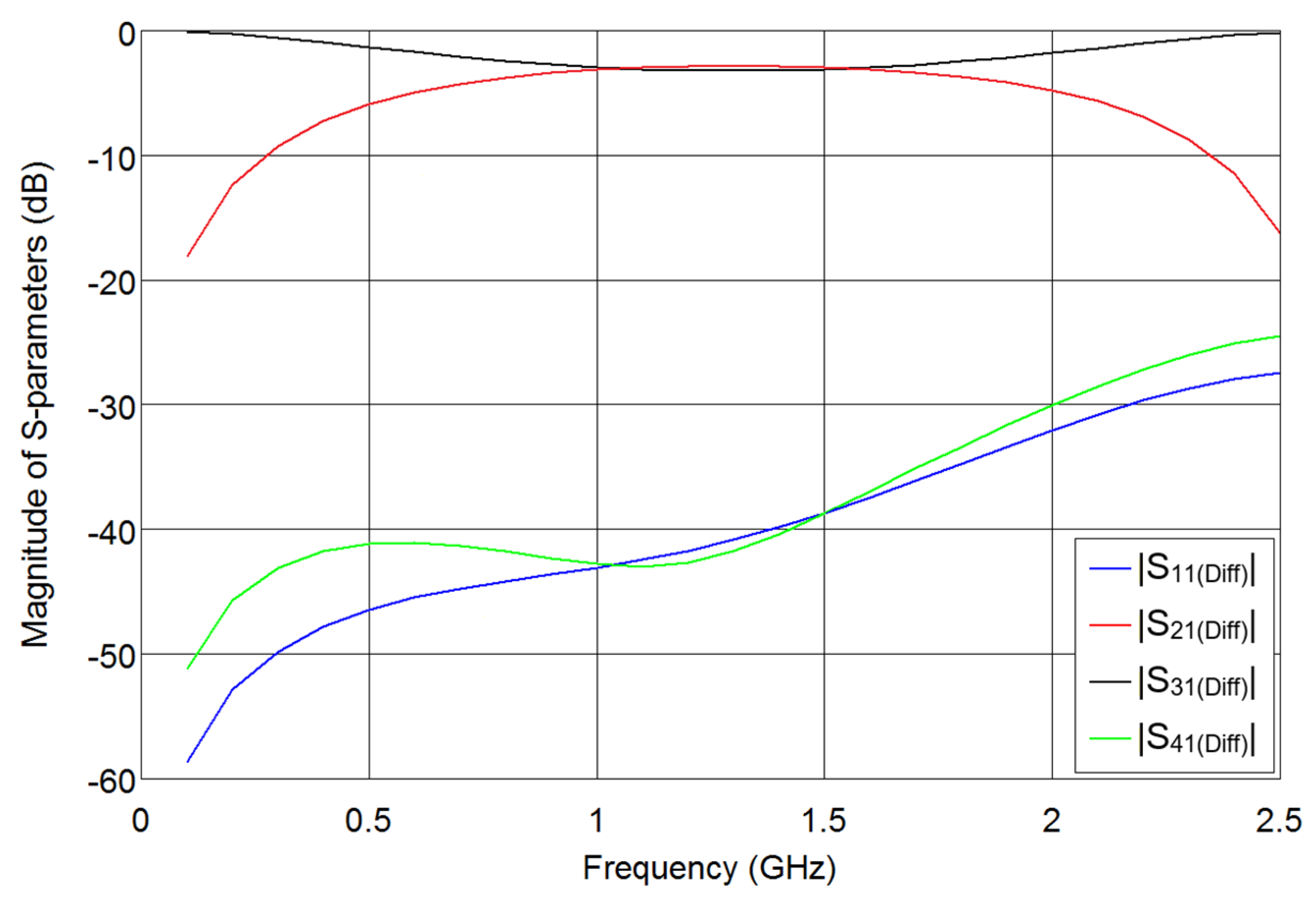
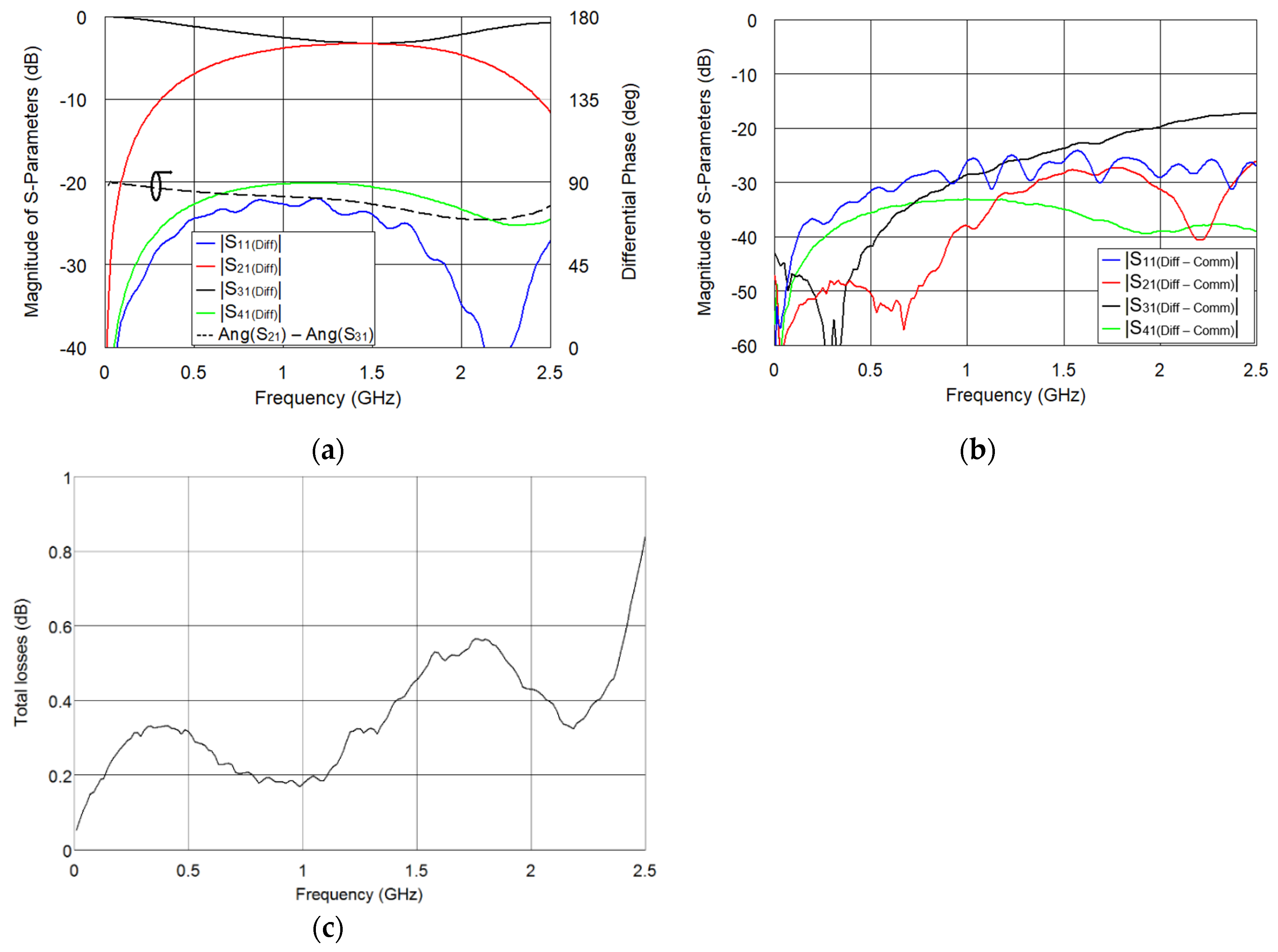
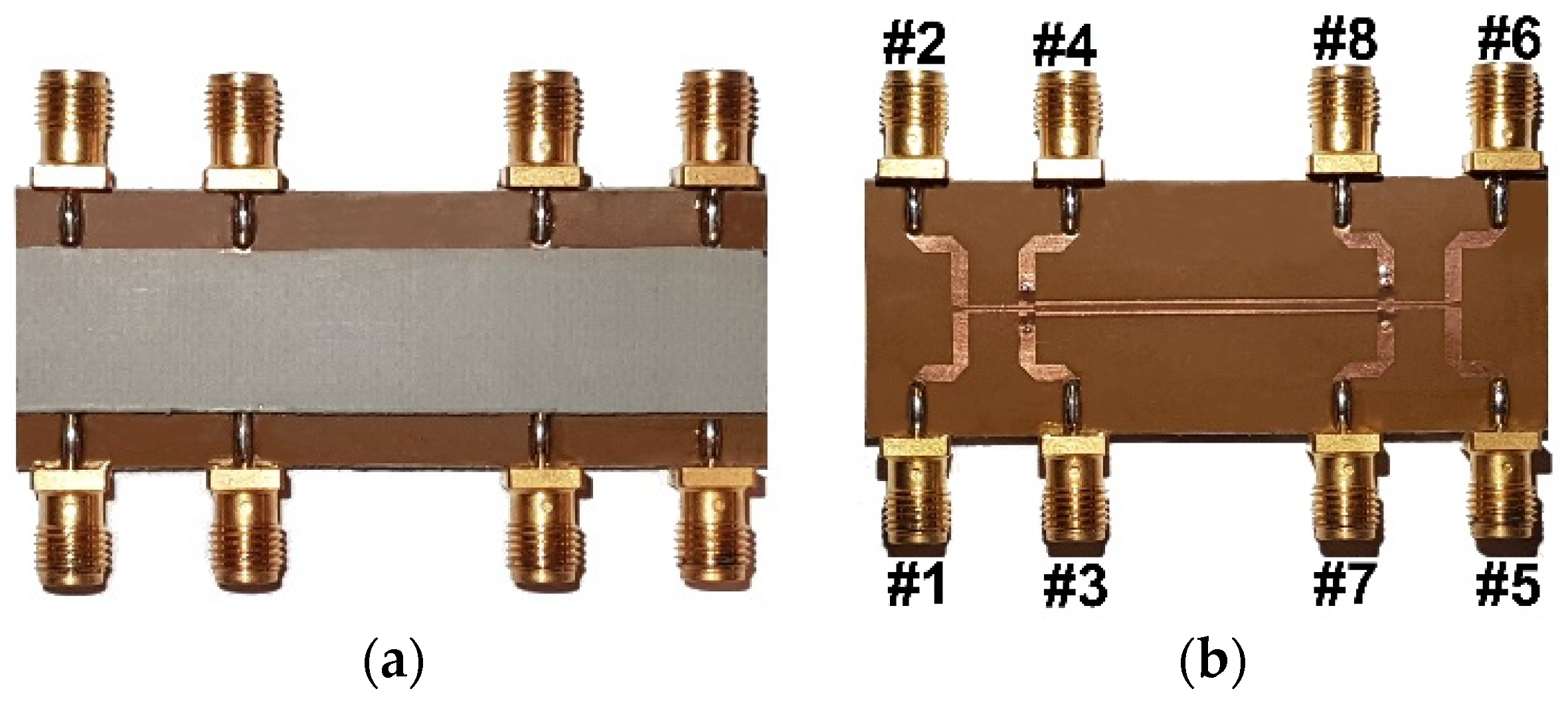
© 2020 by the authors. Licensee MDPI, Basel, Switzerland. This article is an open access article distributed under the terms and conditions of the Creative Commons Attribution (CC BY) license (http://creativecommons.org/licenses/by/4.0/).
Share and Cite
Gruszczynski, S.; Smolarz, R.; Wincza, K. Differential Bi-Level Microstrip Directional Coupler with Equalized Coupling Coefficients for Directivity Improvement. Electronics 2020, 9, 547. https://doi.org/10.3390/electronics9040547
Gruszczynski S, Smolarz R, Wincza K. Differential Bi-Level Microstrip Directional Coupler with Equalized Coupling Coefficients for Directivity Improvement. Electronics. 2020; 9(4):547. https://doi.org/10.3390/electronics9040547
Chicago/Turabian StyleGruszczynski, Slawomir, Robert Smolarz, and Krzysztof Wincza. 2020. "Differential Bi-Level Microstrip Directional Coupler with Equalized Coupling Coefficients for Directivity Improvement" Electronics 9, no. 4: 547. https://doi.org/10.3390/electronics9040547
APA StyleGruszczynski, S., Smolarz, R., & Wincza, K. (2020). Differential Bi-Level Microstrip Directional Coupler with Equalized Coupling Coefficients for Directivity Improvement. Electronics, 9(4), 547. https://doi.org/10.3390/electronics9040547





